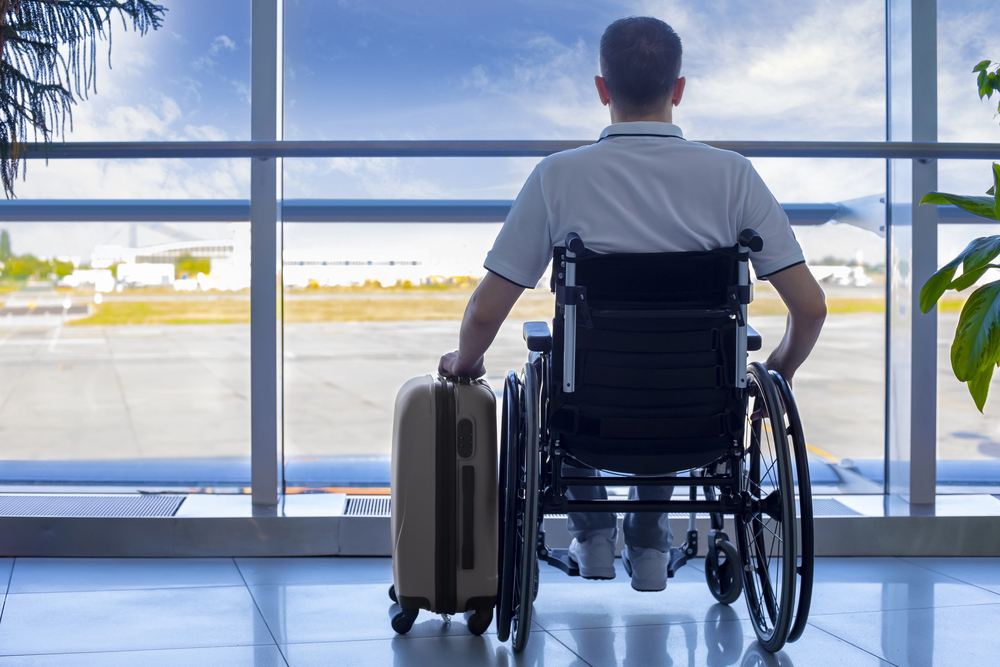Airport Tips for Wheelchair Users: How to Navigate Air Travel with Confidence

Empowering Wheelchair Users: Tips for Confident Air Travel
Airports can be overwhelming, especially for those navigating them in a wheelchair. That’s why finding reliable, practical airport tips for wheelchair users is essential for a smoother journey. From accessible parking to wheelchair assistance and pre-boarding options, many airports now offer features designed to support travelers with mobility challenges.
In this guide, Split Second Foundation Founder Mark Raymond Jr. shares expert tips for wheelchair users traveling through airports, including what to prepare before your flight, how to navigate terminals, and where to find key accessibility services. Whether you’re a first-time flyer or a frequent traveler, these airport accessibility tips will help ensure your next trip is as stress-free as possible.
Booking and Pre-Travel Preparation: Start Your Accessible Journey Early
One of the most important airport tips for wheelchair users is to notify the airline of any mobility or accessibility needs at the time of booking. Request wheelchair assistance, seating accommodations, and arrive early to allow extra time for screening and boarding. Checking the airport’s accessibility page in advance can provide useful info tailored to wheelchair users. The US Department of Transportation has a comprehensive guide to accessible airport travel that can be viewed at: https://www.transportation.gov/individuals/aviation-consumer-protection/wheelchair-and-guided-assistance
Accessible Parking and Drop-Off: What to Know Before You Arrive
When planning your trip, make use of wheelchair accessible airport parking and curbside drop-off areas. Pre-booking a space near the terminal entrance can save time and ensure smoother access on travel day.
Wheelchair Assistance and Security Screening: Navigating TSA with Ease
Among the most essential airport tips for wheelchair users is knowing your rights during security checks. TSA provides a Disability Notification Card, and alternative screening methods are available upon request.
Terminal Navigation for Wheelchair Users
Airports are becoming more accessible, with ramps, elevators, and wide walkways. Use airport apps to locate accessible airport features like restrooms and assistance desks. Courtesy shuttles and moving walkways are also helpful for long distances.
Accessible Restrooms, Dining, and Shopping
Know where to find wheelchair-accessible restrooms in airports and take advantage of family restrooms for extra space. Most dining and shopping areas are equipped with wide aisles and accessible counters — and staff are usually happy to assist if needed.
Airport Assistance and Pre-Boarding Tips for Wheelchair Users
Visit the accessibility services desk if you need help with baggage, navigation, or boarding. Pre-boarding is typically available for wheelchair users, giving extra time to get comfortable. Airlines provide aisle chairs and bulkhead seating upon request.
Traveling with Service Animals and Knowing Emergency Protocols
If you’re flying with a service animal, inform the airline in advance. Most terminals have relief areas. Additionally, one of the most overlooked airport tips for wheelchair users is to familiarize yourself with emergency exit plans in case of an evacuation.
By planning ahead and utilizing airport accessibility services, wheelchair users and travelers with mobility challenges can have a stress-free and comfortable flying experience.
About the Author: Split Second Foundation
20.6 million Americans live with some form of ambulatory disability, requiring a mobility device. Many of these people face an isolated world with few social interactions, health complications, a higher risk of suicide, a shorter life expectancy, and few places to turn to for assistance. Split Second Foundation, a Louisiana-based non-profit 501(c)(3), helps provide support, recovery tools and tactics, ongoing fitness exercise, education, and answers to people with a disability or medical condition.




